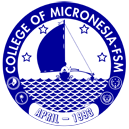Purposeful Dialogue: You May Need More Than One Mode of Communication to Achieve Your Goal
A Story
[Note: The full document Strengthening Purposeful Dialogue: A Handbook Of Guiding Principles, Protocols, and Strategies is available for download.]
AN EMAIL MAY NOT BE ENOUGH
A unit-level manager at a state campus e-mailed a higher-level administrator to secure approval or certification of the additional personnel requisitioned for the campus’s financial aid office. Immediately, the higher-level administrator contacted the director of financial aid to solicit thoughts about the request and to explore workable options. The position was originally budgeted under the FY budget; however, since the campus was not able to achieve its revenue and enrollment projections, funds for the position were not available.
In an email to the unit-level manager, the higher-level administrator reported the request was being deferred. Several reasons were cited and alternatives suggested. The unit-level manager sent a follow-up email citing justifications to substantiate that the request was critically necessary to the effective and efficient operations of the office, and requested the reconsideration for the approval of the request. What followed was a flood of email exchanges involving numerous additional parties, with no satisfaction for anyone.
At that point the higher-level administrator finally decided to telephone the state campus dean to talk about the issue, to clarify misunderstandings, and to identify practical and reasonable alternatives. This dialogue finally led to a reasonable solution. Choosing the most effective mode of communication is unquestionably a precondition to quality communication processes. However, sometimes we only begin to realize that we have not made a good choice until misunderstandings have occurred and caused a conflict to erupt. While email is an absolutely convenient tool of communication, it may not be always the best way to communicate everything.
Protocol
Choose the mode of communication that best suits the situation in which you find yourself. You should use the mode that provides the most effective path for achieving your goal. Email may prove the easiest mode, but not necessarily the most effective.
Strategies
In this case, both the unit manager and the higher-level administrator missed an opportunity to take early control of the communications on this issue.
- When communicating such requests, it is best to define the problem for the reader first. In this case the unit manager should have gathered and submitted evidence about the harm caused if the request is not granted. Lacking such evidence up front will inevitably lead to a negative decision, or at least a prolonged back and forth exchange in order to discover what evidence does exist.
- Make sure all effected parties are part of the communication from the beginning. In this case the state campus dean and financial aid director should have been included and might have well been the first persons that the unit manager should have contacted about the request. That way options could have been presented early in the exchange.
- Except in extraordinary circumstance, communicate through the normal channels. The higher-level administrator could have asked the unit manager to forward such requests through the state campus dean.
Related Stories
1 <a ="http:="" www.comfsm.fm="" myshark="" news="" item="805/"">2 3 4 5 6 7 8 9
